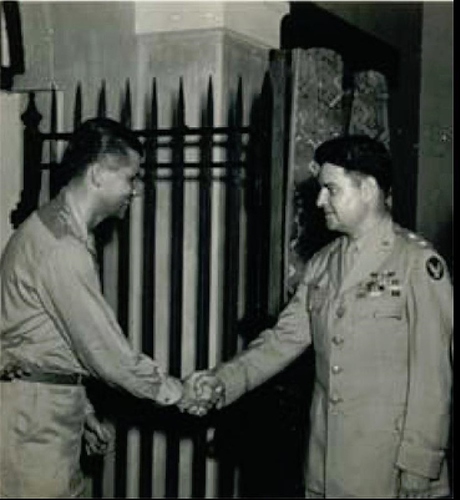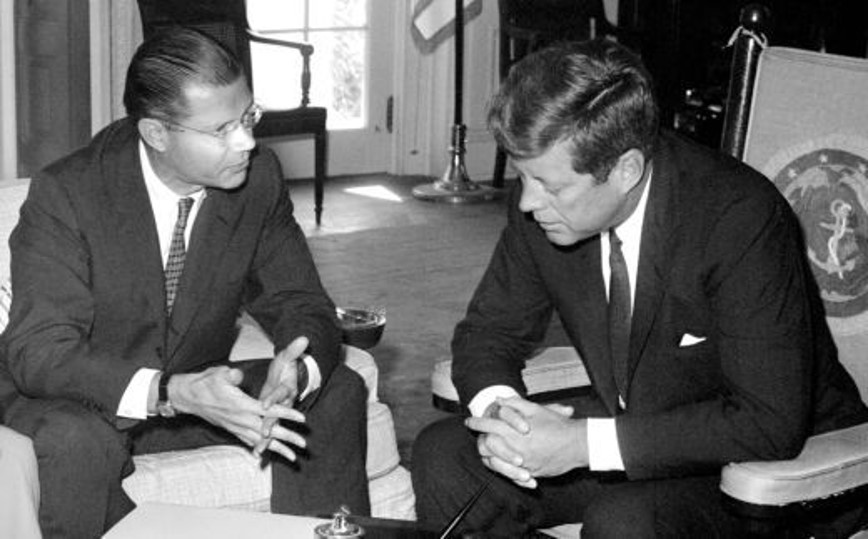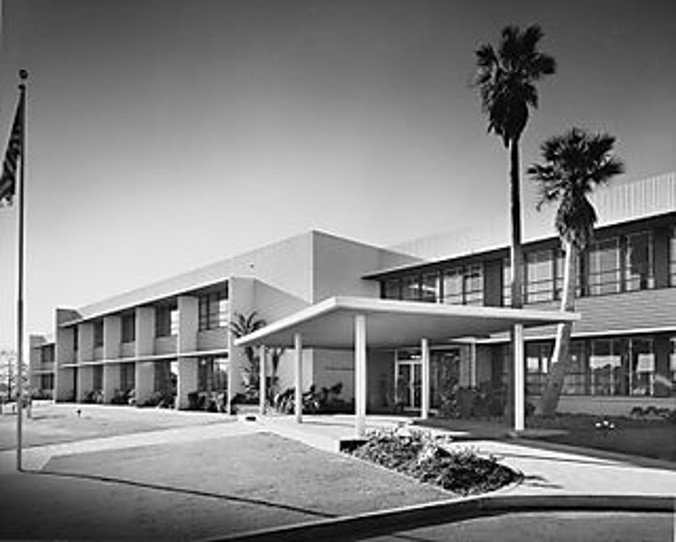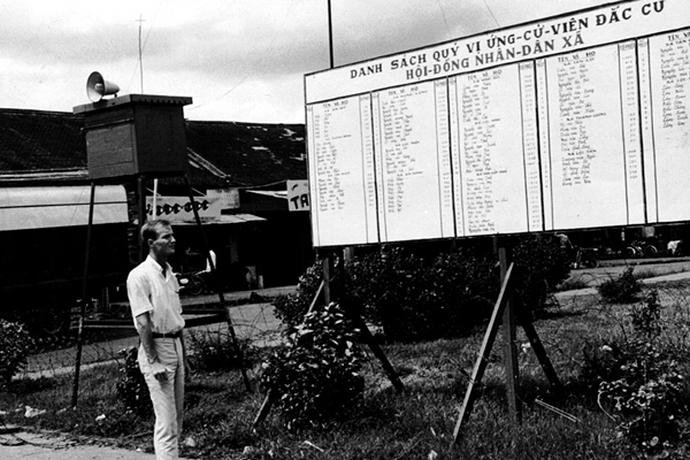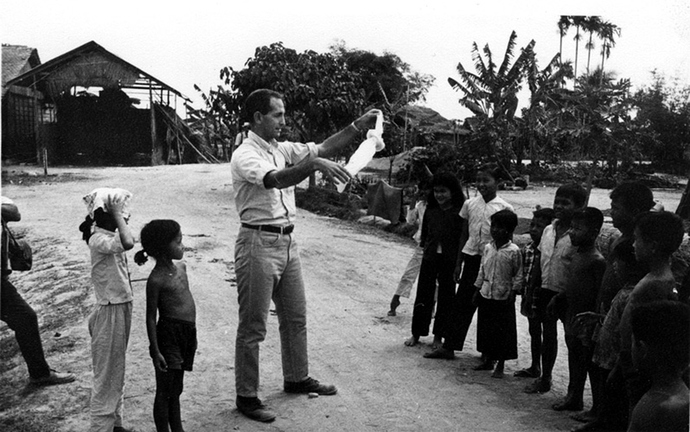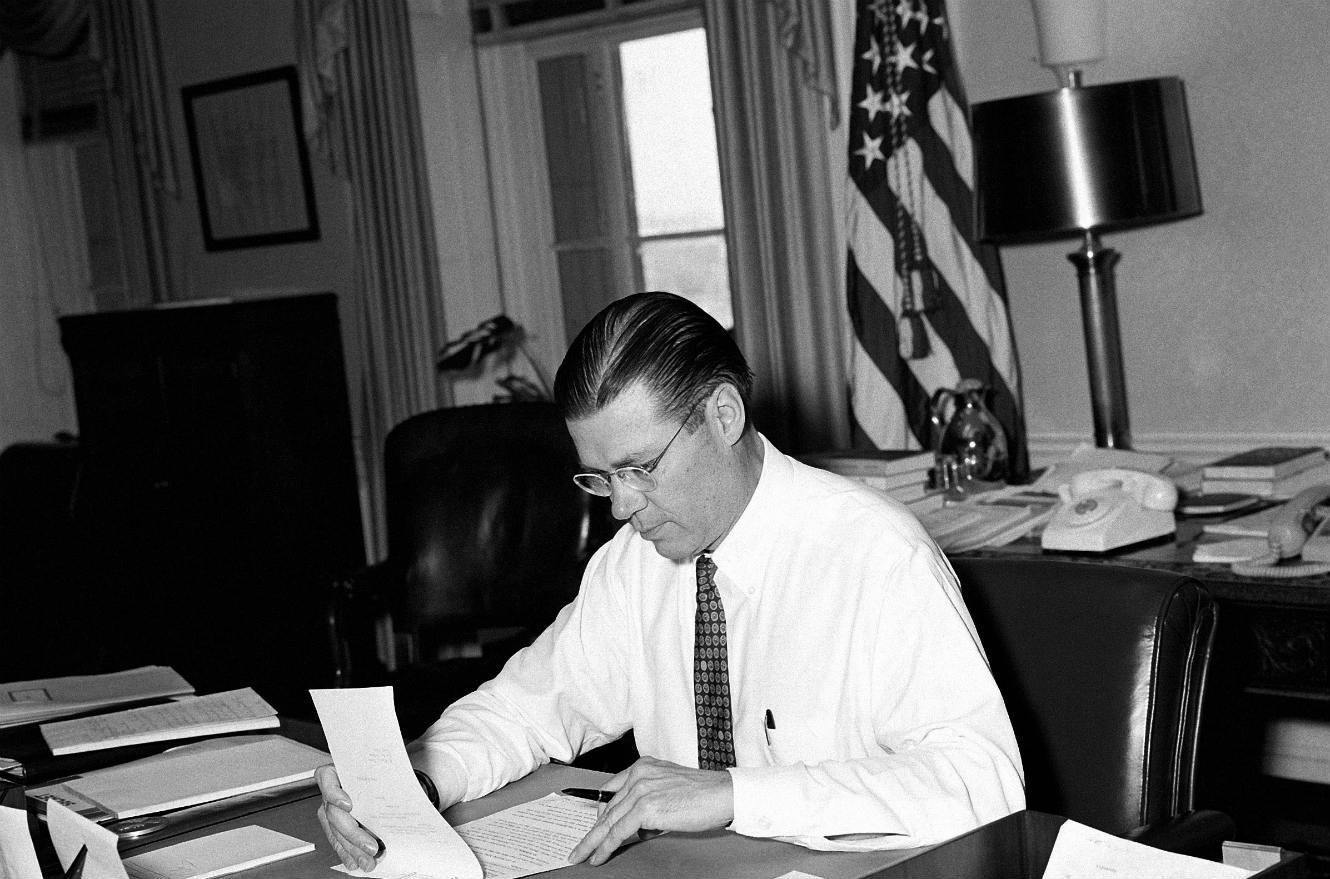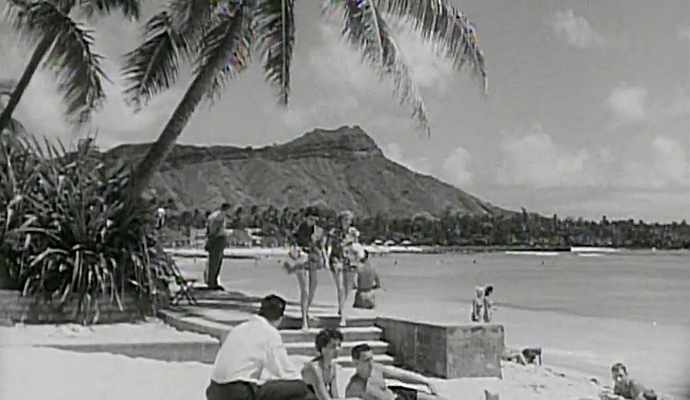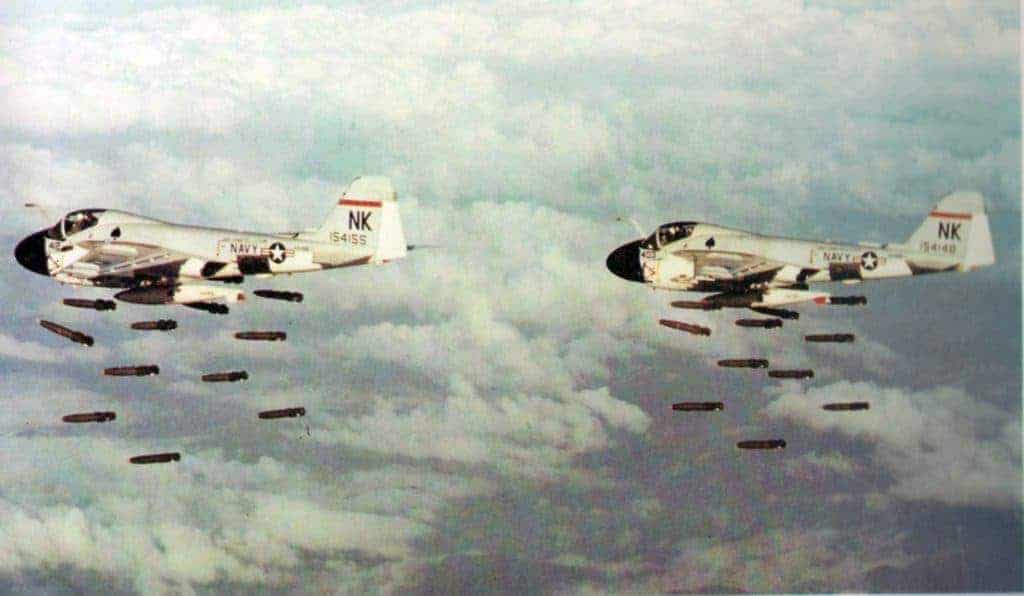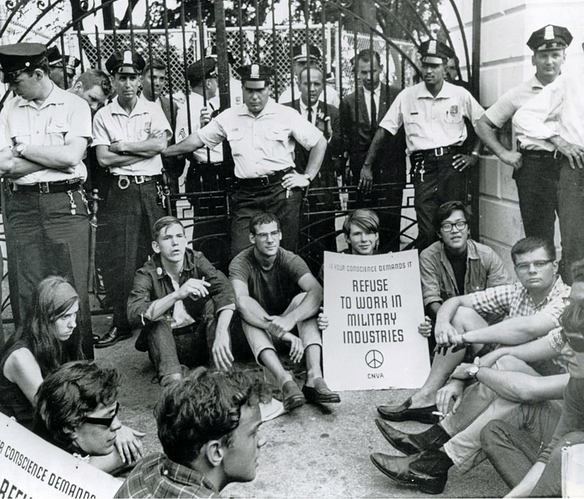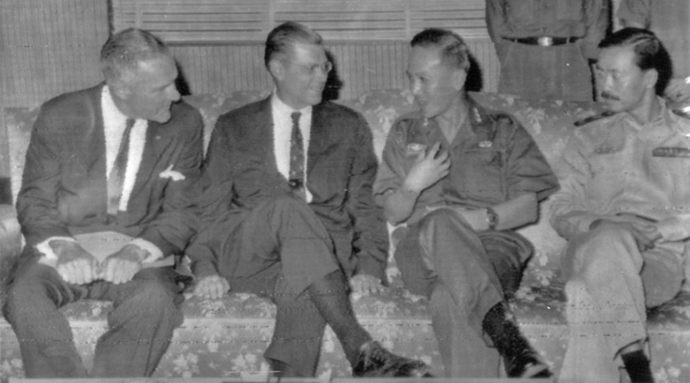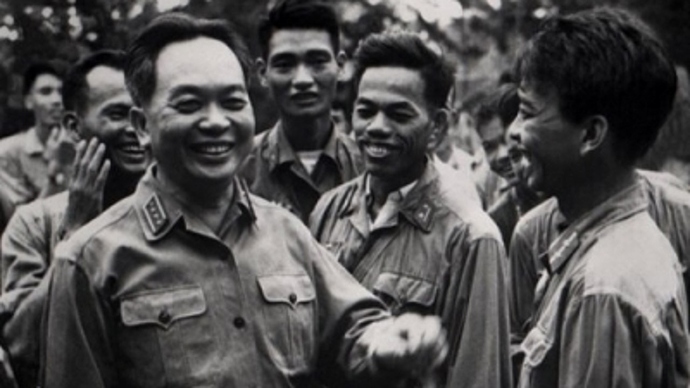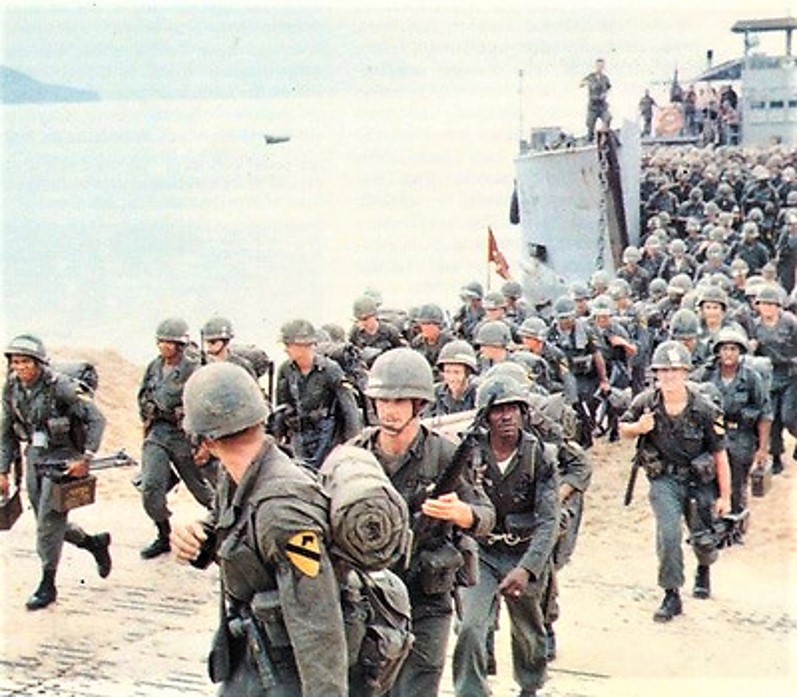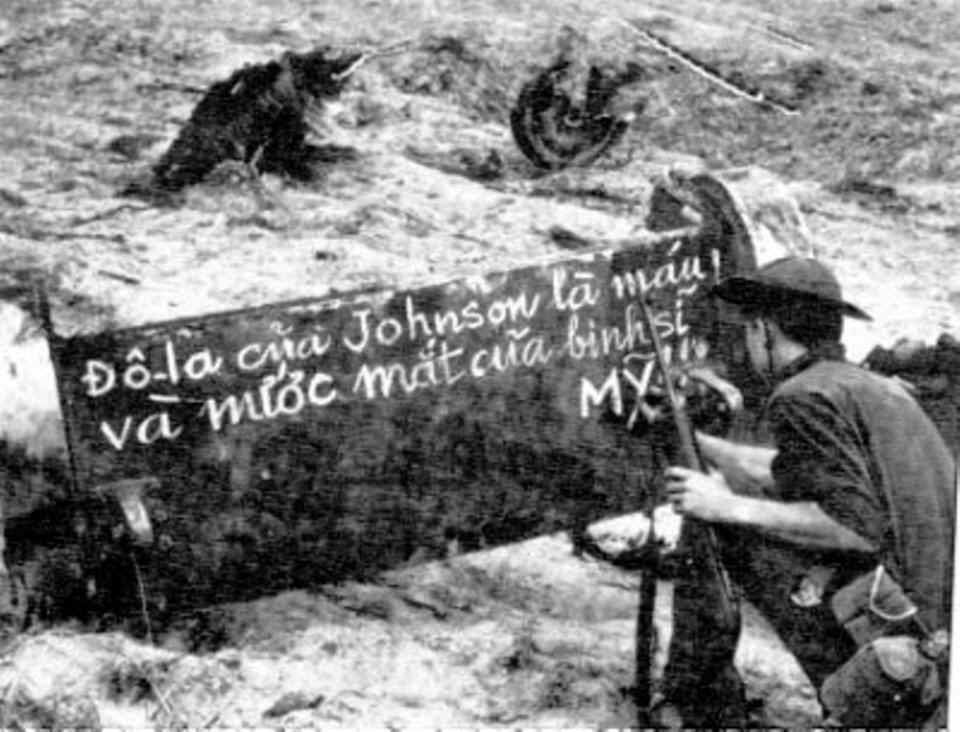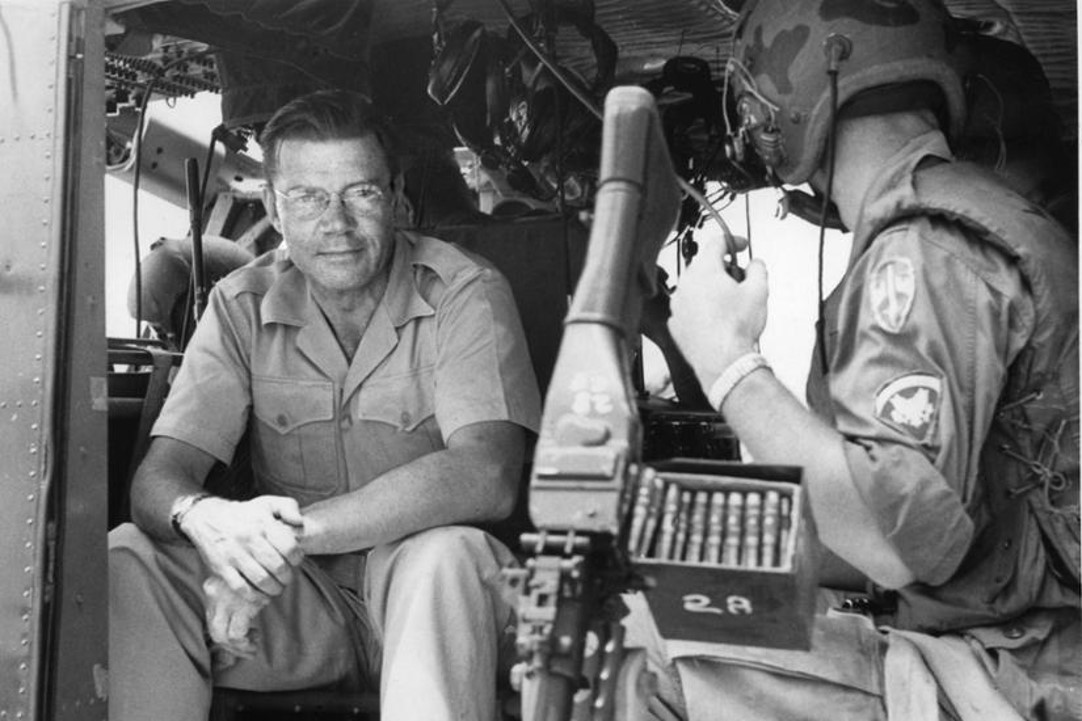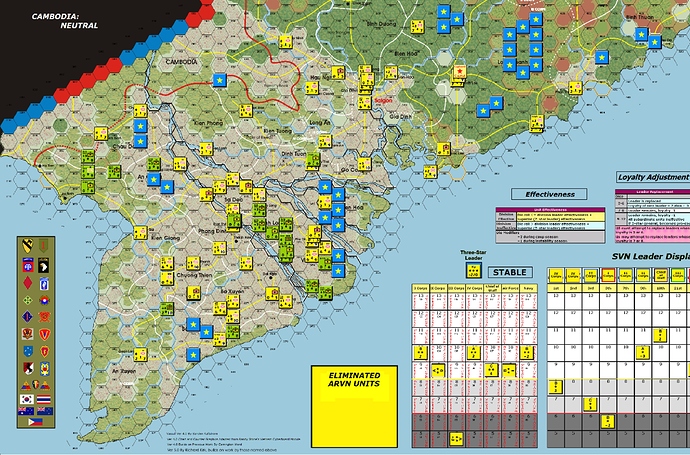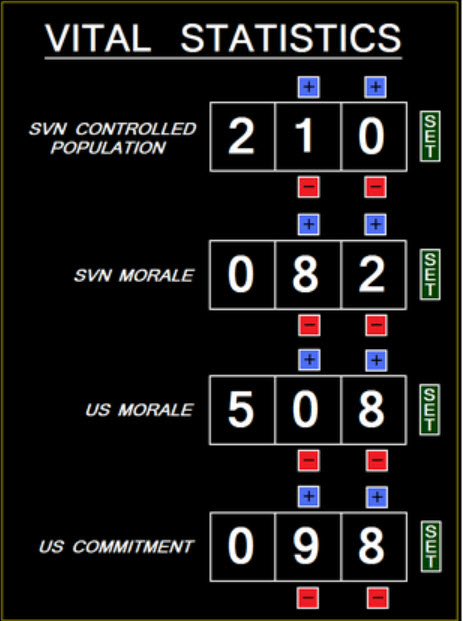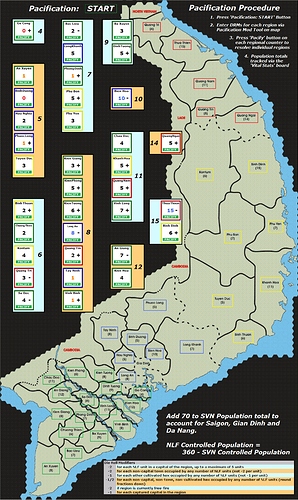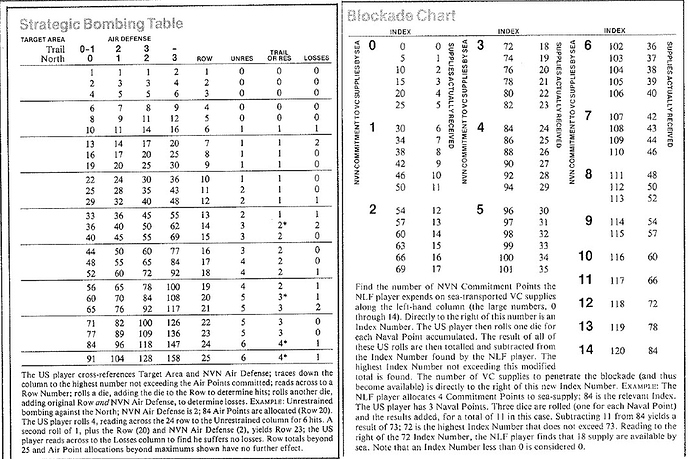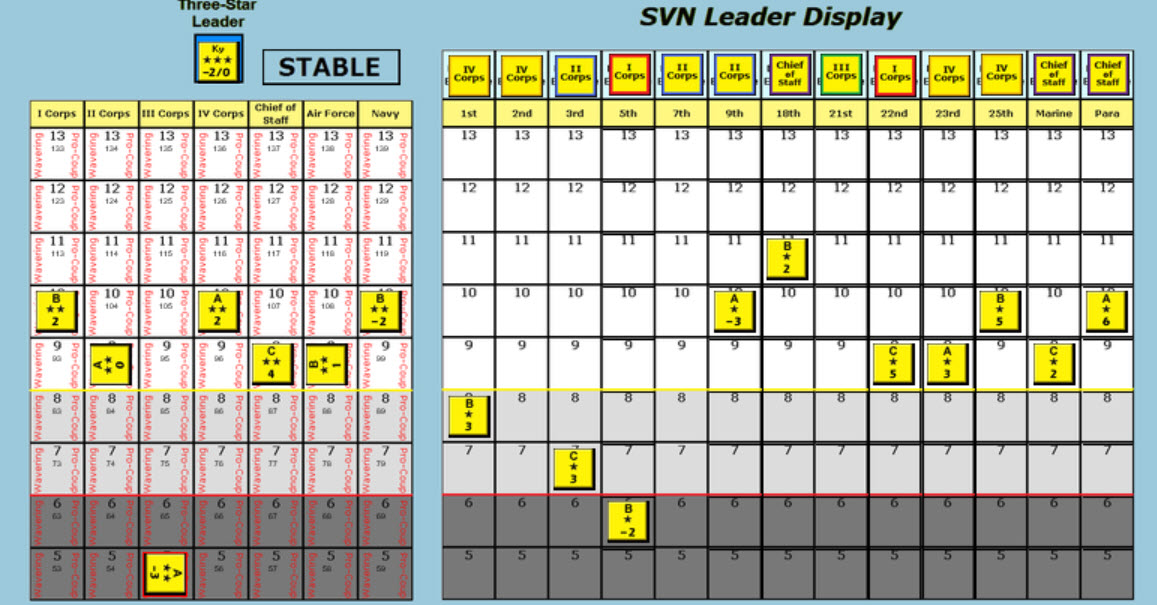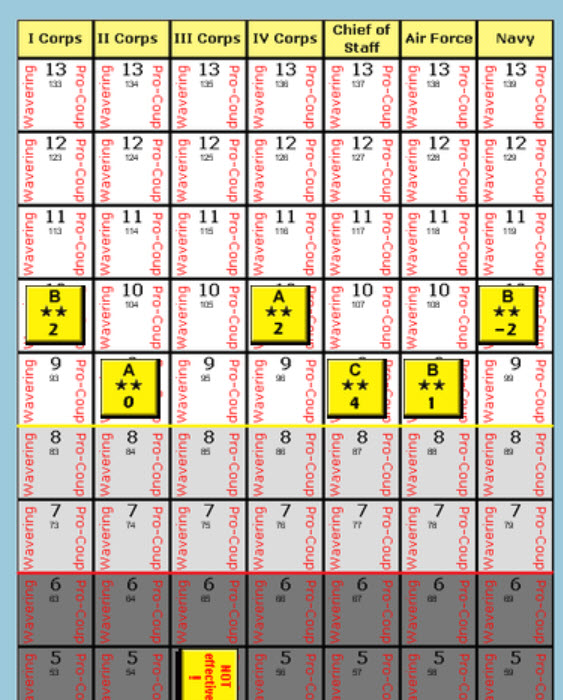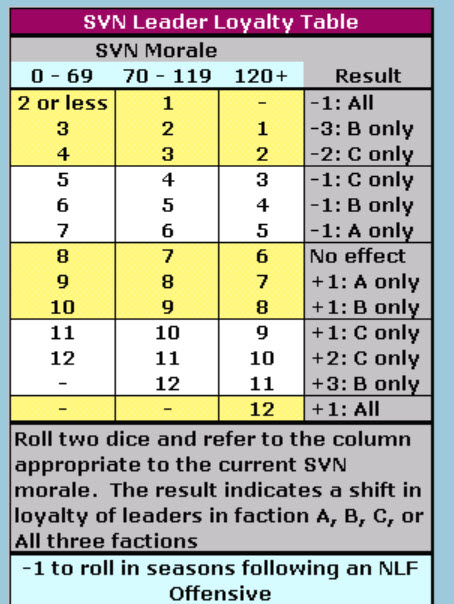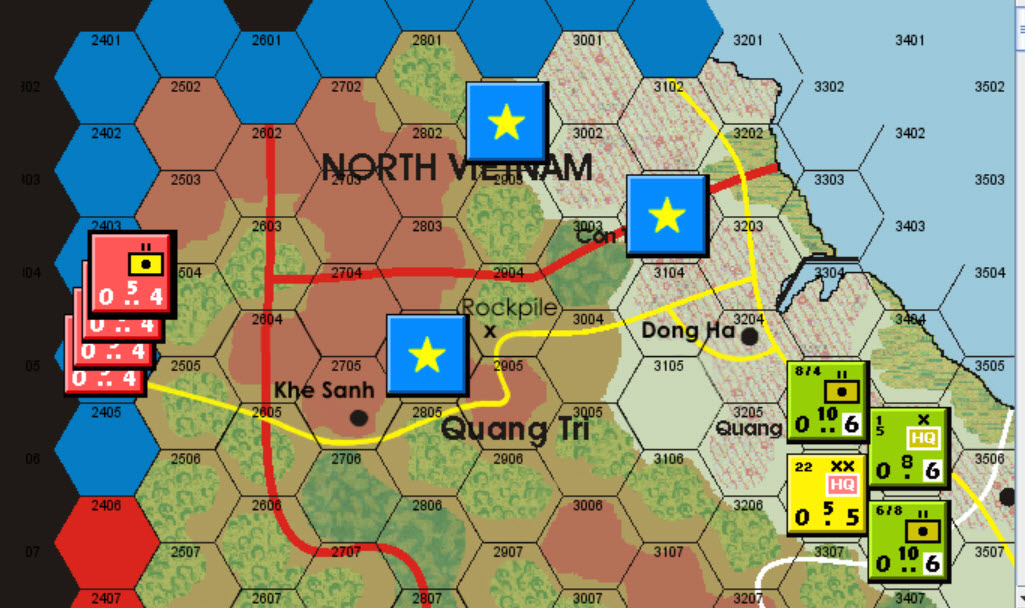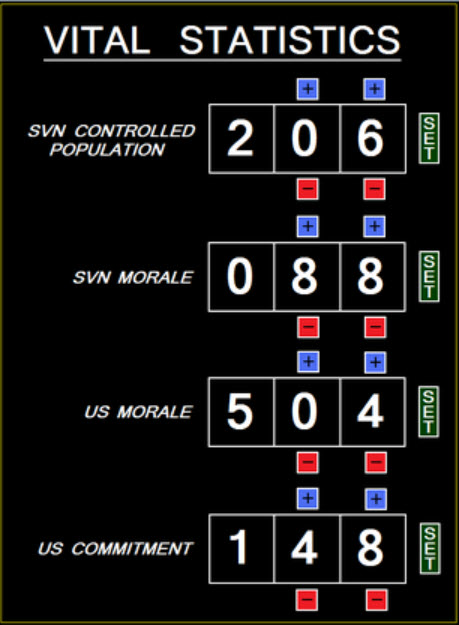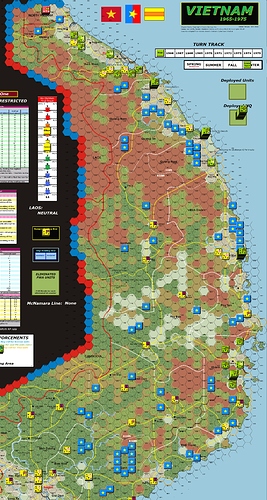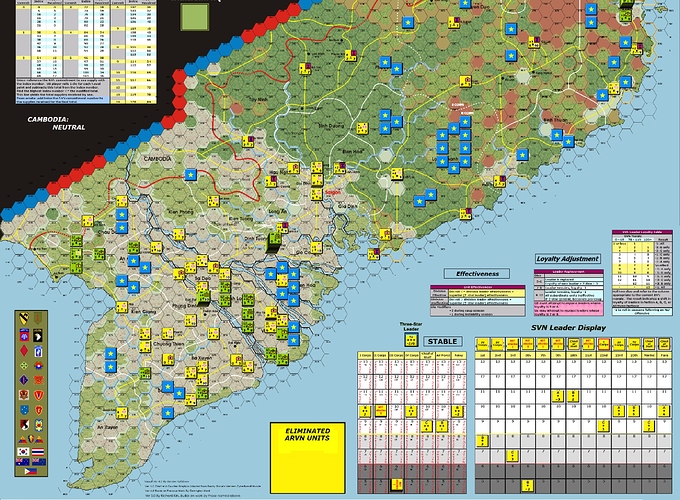Uptight (Everything’s Alright)
Vietnam 1965-1975
1965 Winter Narrative, Interphase Exposition and Winter Interphase Resolution
“I’m a poor man’s son from across the railroad tracks. The only shirt I own is hangin’ on my back. But I’m the envy of every single guy, since I’m the apple of my girl’s eye.”
Put on your best dancing shoes, get a drink (I recommend hard, not soft), and then please hit play before reading and turn to the maximum volume your brain or household will allow.
Stevie Wonder. “Uptight (Everything’s Alright)”. Written by Stevie Wonder, Sylvia Moy, Henry Cosby. Music by The Funk Brothers. Tamla. Released November 22, 1965. In the Billboard 100 all through the Winter, finally reaching Number 3 in February. Stayed at the top of the R & B charts for five weeks. The song won Wonder his first two career Grammy Award nominations for Best R&B Song and Best Male R&B Vocal Performance.
The Secretary of Defense
Robert Strange McNamara was born in San Francisco, California in 1916 to second-generation hardscrabble Irish Americans, struggling to stay in the middle class they had just entered. His intellectual brilliance was recognized at a young age and he also became an Eagle Scout before graduating High School. He attended UC Berkley, graduating with a BA in Economics, followed by an MBA at Harvard, all by the age of 22. After this, he worked at Price Waterhouse in San Francisco for a year and then returned to Harvard in 1940 at age 24 to teach accounting in the business school and became the highest paid and youngest assistant professor at that time. During World War 2 he attained the rank of Lieutenant Colonel and was awarded the Legion of Merit while serving in the United States Army Air Forces (USAAF). His major responsibility was the analysis of US bombing efforts against Japan, focusing on enhancing efficiency and effectiveness, especially the B-29 forces commanded by Major General Curtis LeMay in India, China, and the Mariana Islands. McNamara was considered, at age 29 at the War’s end, in 1945, to be a genius, and an expert in the burgeoning field of Statistical Analysis.
In 1946 McNamara along with group of officers from his USAAF Statistical Control operation were hired to help Ford Motor Company reform its money-losing and chaotic administration through modern planning, organization and management methodologies. The "Whiz Kids", led by McNamara, had helped Ford make a complete turn-around by the mid-1950s and McNamara was rewarded in 1960 by becoming the first President of Ford Motor Company from outside the Ford family.
McNamara was President of Ford for all of three months, when he was selected by the new President-Elect, John F. Kennedy, to be the Secretary of Defense in 1961. McNamara relied on Defense Whiz Kids (many of whom were World War Two Statistical Board alumni along with McNamara) who had helped found and worked for the RAND Corporation in the 1950s,. Under McNamara’s stewardship they were responsible for the institution of systems analysis in public policy, which developed into the discipline known today as policy analysis. They consolidated intelligence and logistics functions of the Department into two centralized agencies, streamlined its purchasing and administrative practices, implemented massive cost reductions from the consolidation of programs from different services, believing that the redundancy created waste and unnecessary spending. McNamara was highly regarded in the Kennedy Administration advising the President on wide range of issues beyond national security, including business and economic matters. He was a principal adviser on steps taken during the Cuban Missile Crisis and on the need to remove Diem from power in South Vietnam.
Rand Corporation and Vietnam
The Rand Corporation, the first public/private partnership “Think Tank” had been tasked with multiple studies regarding the conflict in South Vietnam dating back to 1963; studies on the Strategic Hamlet program, the effectiveness of counterinsurgency programs, Viet Cong Recruitment and Morale, provincial population control levels, the effectiveness of aid and education programs in reducing Viet Cong influence, and many, many more studies.
Data would be collected from many points: US and ARVN Military reports and intelligence sources, USAID program personnel and records, State Department personnel and reports, information from Viet Cong defectors now in the Chiêu Hồi Program, interrogations of captured Viet Cong Prisoners, South Vietnamese government reports and records.
By 1965 these myriad data points would be collated in Saigon and processed, by former RAND and Defense staffer, and current State Department employee Daniel Ellsberg, and sent back to RAND Headquarters in Santa Monica, California.
At RAND the data would be processed, turned into punchcards, and fed into several of the many IBM 7094 II Scientific/Research mainframes there, the latest in cutting edge computing, and statistical trends and probabilities determined for various metrics in South Vietnam which interested the Department of Defense and MACV. On November 17, Secretary McNamara was in receipt of one particular report, which he found troubling.
Statistical Analysis indicated that as of September 1, 1965 approximately 9,333,333 of South Vietnam’s estimated 16,000,000 inhabitants lived under government control. Approximately 6,666,666 of its inhabitants lived under NLF control. That number had been trending downward. However, as of November 10, given current trends in South Vietnam, it was possible that by December 1 that number could climb, worst case, to 7,244,444, an increase of nearly 10%. That number was an outlier in the multiple statistical models run, though the median of the models was determined to be an NLF increase of 355,555. The median outliers were determined to be, at worst, 488,888.
McNamara and Lodge Arrive in Vietnam
Secretary McNamara travelled to Vietnam on November 22, accompanied by new US Ambassador Henry Cabot Lodge Jr., now beginning his second tenure as Ambassador after the resignation of now former Ambassador Taylor for health and family reasons. They were accompanied by former Attorney General and now US Senator from New York, Robert F. Kennedy, visiting the country on a fact-finding tour (and irritating President Johnson). The trip by the Secretary was ostensibly to visit US Troops on Thanksgiving, and to take a tour firsthand to view the progress made, but the Secretary wanted to discuss the troubling new trends with MACV Commander General Abrams.
The report’s internals indicated that the greatest impact to a sharp decline in Government controlled population lay in the NLF presence in the populous Annamite Coastal Plain from south of Da Nang to approximately Phan Rang in Binh Thuan Province. If uncontested, as it was at present, this decline could gain momentum and conceivably achieve a downward spiral, possibly an irretrievable one, from which the Republic of Vietnam may not be able to recover from. The Central Intelligence Agency concurred with the report’s warnings. General Abrams current plan for force increases, based upon the Band Sapphire option of Operation Freedom Partner, currently called for the deployment of the I Marine Amphibious Force (1st Marine Division) from Camp Pendleton, California to IV Corps in December, where it would transition responsibility for Partner and Overwatch operations with the 101 Airborne (Air Assault) Division, leaving that Division to change it’s Base of Operations to Cam Ranh Bay in Southern II Corps. As well, the 1st Cavalry Division (Airmobile) was to arrive in Qui Nonh in early December, and Abrams was confident that these divisions, along with the 173rd Airborne Brigade (Separate), already in Cam Ranh Bay/Nha Trang, conducting Defensive Operations, could handle this threat.
A Change in Plans
The Americal Division was now finishing training at Scofield Barracks in Hawaii after forming at Fort Irwin California, where the active duty 196th Light Infantry Brigade had joined the US Army Reserve 2 Brigade/63 Infantry Division (reservists from California, activated in May). The 1st and 3rd Brigades of the 63rd Infantry Division had only recently been activated and continued to organize and train at Fort Irwin while the 196th and 2/63rd joined the 11th Infantry Brigade in Hawaii for final preparations for Division-level operations before departing for South Vietnam, where it was to deploy to Da Nang in March 1966. McNamara urged Abrams to consider deploying the Americal immediately in early December to aid in reducing the NLF presence along the coast as soon as possible. Abrams was receptive but expressed concerns regarding the Division’s readiness. McNamara assured him that General Johnson was satisfied the Division could be deployed immediately. Abrams also requested that US Covert Reconnaissance Operations be continued off North Vietnam’s coast, and emphasized the ineffectiveness of US and South Vietnamese Navy patrols to interdict NLF Sea Supply infiltration, hampering his efforts to wrap up clearing operations in IV Corps, as well as contributing to the NLF problem in the Annamite Coastal Plain. McNamara agreed to this and suggested that US Navy efforts off the Coast of South Vietnam should be redoubled. He interceded with the President, who reluctantly approved, but re-emphasized that the unrestrained bombing of the North must be halted in Spring, as he wanted to attempt to reduce tensions with the Chinese and to at least offer to extend a hand to the North Vietnamese to begin negotiations to end their aggression.
In South Vietnam’s Provinces
The downward trend in the provinces continued to favor the communists but overall, though the downward trend continued, a USAID and CIA estimate released December 2, 1965 indicated that the population under government control likely had fallen by 176,000 in the Fall, a decrease of 1%. MACV, USAID and the Agency had increasing confidence that the increase in nation-wide morale due to aid programs and the increasing US presence, the clearing of occupied capitals and the disruption of VC efforts in the Mekong Delta would stop, and likely reverse this trend by year’s end.
Strategic War
Interdiction of several convoys bound for the Trail were successful as well as bridges at intersections 2, 17 and 21. However, crew reports indicate POL and industrial infrastructure targets continue to be dispersed by NVN. As well, Air Defense sites appear to be under construction. Strikes have reached a limit of effectiveness given available means.
Cable from COMUS2NDAIRDIV to CINCPAC to November 30, 1965.
The 2nd Air Division and Task Force 77 launch nearly all available bombers against targets in North Vietnam. The Haiphong Railyards and Port were hit particularly hard again, as was Vinh’s seaport and industrial center and the city of Đồng Hới, targeting depots thought to house supplies headed south via sea and the Trail, respectively. The strikes were determined to be of limited effectiveness in degrading capabilities given the force applied, as continued North Vietnamese efforts to disperse vital POL stocks to smaller, hidden locations. Several Air Defense sites, of Chinese manufacture, and possibly Chinese-manned appeared in Haiphong, Vinh and at Trail entrance hubs. As well, the Trail was interdicted, with the Nape Pass and the Mụ Giạ Pass as primary targets. There were no aircraft losses and the strikes were determined to be a success.
Protests Subside But Continue
The tapering of commitment of new US Forces to South Vietnam in the Fall and the muted response to Bombing efforts seemed to temper US public reaction against US Involvement in Vietnam in the Winter. On December 4 there was an anti-war demonstration in Washington, D.C. on Pennsylvania Avenue, at which Carl Oglesby, the new president of a mainly midwestern student organization called Students for a Democratic Society (SDS), made a speech, addressed to the liberal crowd, and in circuitous terms alleged that the United States government was imperialist in nature. The speech received a standing ovation and major press coverage on the three major US Networks.
Sea Infiltration Persistent
The suspension of US covert activities off the coast of North Vietnam hampered US interdiction efforts greatly. CIA estimates indicated that supplies by sea reaching South Vietnam may have reached a new high, estimating that more than 1,300 tons may have been received by PLAF logistics units in South Vietnam via the ocean route.
South Vietnamese Politics
Prime Minister Ky and President Thieu met with Secretary McNamara and newly-arrived Ambassador Lodge in December. Prompted by General Abrams, they both requested the removal of III Corps Commander Lieutenant General Nguyen Bao Tri and Nguyen Huu Co, the 5th Division Commander. The Prime Minister and President demurred on these requests and each was a patron of one of the Generals (Ky of Thi and Thieu of Co). McNamara, concerned with other issues, didn’t press the matter. The impact of the Fall’s USAID program deliveries and personnel, combined with the tangential economic boost and direct military effects of the increasing US Military presence in the country boosted South Vietnam’s morale, according to provincial USAID advisers.
North Vietnamese Politics
In Hanoi, the continued bombings of the North and the successes of the move to the Revolutionary War strategy increased the Politburo’s overall resolve to continue to increase its military commitment to the conflict, and more Soviet and Chinese aid was promised to be forthcoming. However, the latter tapered a bit, as the lower US force increases in the Fall caused the Soviets to reduce aid.
US Arrivals and ARVN Formations
In South Vietnam, on December 1, 1965 the US 1st Marine Division arrived in IV Corps: the bulk of the Division and the United States Army 2/31 FA Battalion of 155mm Howitzers arriving in My Tho and the 7th Regiment and the Divisional Armor Battalion arriving in Cần Thơ. The 6/16, 2/12 8/12 Field Artillery Battalions of 155mms were withdrawn from IV Corps to Okinawa for refurbishment and reorganization. On December 3, the bulk of the 1st Cavalry Division (Airmobile) arrived in Qui Nonh, and the 3rd Brigade, accompanied by the 5/42 FA Battalion of 155mm Howitzers, arrived in Nha Trang. On December 7 the Americal arrived in Da Nang and Chu Lai. The 196th Light Infantry Brigade, a Battalion of the 2/63rd Infantry (now reflagged as the 198th Light Infantry Brigade), the Divisional Armored Cavalry Squadron and the Divisional Headquarters, with 3 dedicated Battalions of 155mm Artillery, landed in Da Nang. The 11th Infantry Brigade, the remainder of the 198th and the Divisional Artillery Battalion of 175mm guns landed at Chu Lai. As well, three USAF squadrons of F-105Ds and 4 replacement battalions of US Army troops arrived in Bien Hoa., along with 6 Aviation Battalions of UH-1D and CH-47 Helicopters. Equipment arrived in country to outfit 16 ARVN Battalions-worth of replacement cadres. Operation Market Time was substantially reinforced. In early November, seventeen Point-class cutters were loaded as deck cargo on merchant ships in multiple US ports and dispatched to U.S. Naval Base Subic Bay. At Subic Bay each cutter was armed with an 81 mm mortar and five .50 caliber M2 Browning machine guns. They were organized into Division Eleven operating out of An Thoi with eight cutters and Division Twelve operating out of Da Nang with nine cutters and staffed by Navy Crews which had been trained for this purpose. As well, each Division was assigned 25 fast patrol craft (PCFs) or Swifts and provided aviation support.
NLF Reactions
The Viet Cong appeared to increase its presence in II and III corps overall, especially the Annamite Coastal Plain and the II/III Corps Seam, while also reinforcing the area around Long Khanh Province. The NLF appeared eager to continue to harassment and ambush tactics after the limited pacification gains of Fall 1965.
Do Numbers Decide?
As Abrams escorted McNamara to Bien Hoa for his departure back to Washington, he had a question for the Secretary. “Sir, we’ve made moves and sped up our timetable, based on a worst-case scenario that the numbers indicated was possible. And then that worst case didn’t happen. We could have headed off a problem here, but what if all these numbers, you know, they don’t add up? Should they be making the decisions? What if they aren’t right?” McNamara stared back at him, uncomprehendingly, as if Abrams was speaking in a foreign language. Because to the Secretary, he was speaking a foreign tongue. McNamara replied, “General, numbers never lie.”
Interphase Resolution (and Exposition)
Please take a deep breath, get up, stretch, hit play before reading and turn to the coolest, punchiest volume your brain or household will allow.
The Beatles. “Nowhere Man”. Parlophone. Released December 3, 1965. Peaked at Number 3 on the Billboard 100 in January 1966. Also, on the album Rubber Soul .
I & II Corps at Interphase Start.
III & IV Corps at Interphase Start.
Vital Statistics
Recordkeeping Phase (an ongoing Process)
Pacification Phase
So this pacification phase troubled me. Haunted me. Worried me. Greatly. It troubled me so much I ran a statistical model, going through Pacification and resolving it 10 times. These were the results:
Model 1 - -8
Model 2 - -7
Model 3 - -11
Model 4- - -5
Model 5 - -2
Model 6- - -8
Model 7- - -2
Model 8- - -6
Model 9- - -13
Model 10- - -6
Average: -6.8
Outliers: -2, -13.
Top 3 Outliers, average: -3, -11
The 13 really scared me. I had at that point resolved to bring in 50 Commitment for Winter. I was already leaning that way, but this made me decide to send three US Divisions.
Final result?
-4 . I got lucky. But I don’t bet on luck.
Strategic War Phase
A. Mission Declaration Segment: I declare what I want to bomb, North Vietnam (Restrained or Unrestrained) and/or the Trail and how many Air Points I allocate. I allocate 22 of my 31 to Pound the North Unrestrained and Unflinchingly. Essen, baby. I allocate 8 against the trail. Just like last turn. This is a war, not a Rand Study.
B. Strategic Bombing Segment: Still no NVN Air Defense built. A Trail Improvement has been made so his optimal is now the “5” box. Rolled a 1 for 22 Air Points conducting Unrestrained Bombing of the North. You take the number of Air Points and cross reference to the Row that corresponds with it given the low (‘0”) NVN Air Defense Levels at present. That’s row 10. I rolled a 1. Row 11. I had a 50% shot at 2 and a 50% shot at 3 Commitment destroyed. I am glad I guaranteed a minimum of 2. 2 NVN Commitment lost. Then I rolled a 1d6/2 (rounded down) +1 for its harm to US Morale. Rolled a 2/2=1+1, -1 Morale. No losses when Curt rolled again to see if I lost any Air Points. SVN Morale gets boosted +4 to 86. Then I roll for 8 Air points against the Trail (which is fragile, 1 hit, and he goes from 10 supplies per commitment point to 9 per). I am on Row 5. Whatever I roll will do 1. I hit the Trail, degrading it. Curt Rolls again, no losses.
C. Blockade Segment: 7 NVN Commitment was sent. That puts him on row 107. I have squadduch, nada, nuttin (choices). So that is a base 42 Supplies for him, =x2 the base commitment sent, (14) = 56 Sea Supplies. All that was a copy/paste from last season Sea Supply is killing me. That is gonna change.
D. Trail Status Segment: Status is one below optimal. Dinged.
Politics Phase
A. SVN Officer Replacement Segment: I must attempt to Mr. Incompetent and Absolutely Disloyal in III Corps. I fail on a 9. He grows more Disloyal and will be pro-Coup and pouts ineffectively with all his Corps assets. I try to replace the crappy 5th Division Commander and roll a 9. He grows more disloyal and his (1 Armored Cav Squadron) Division are ineffective. He goes, one way or another, next Season.
B. Coup Determination Segment: You roll 2d6 and compare it to the Two Star Loyalties. If the roll is less than their loyalty, they are Loyal. Same as their Loyalty, they are Wavering. Greater than their loyalty, they are Pro-Coup.
If there are more Pro-Coup Leaders than Loyal Leaders, there is a Coup. The Three Star gets put back in the Three Star pull and a new one is randomly pulled (it could be the same guy). The loyalty of every Loyal Two-Star Leader goes down by one. The US takes a -3 Morale hit and the SVN take a -8 Morale hit. Coups are bad.
If the Wavering and Pro-Coup Leaders combined are equal to the Loyal Leaders, the Government is Unstable. The US takes a -1 Morale hit and the SVN take a -3 morale hit. Unstable sucks.
If the Loyal Leaders Outnumber Wavering and Pro-Coup Leaders combined, the government is Stable. Lower the Loyalty of Pro-Coup Two Star Leaders by 1.
I rolled a “6”! Yay! I guess the ARVN is happy with the support the US is putting behind them. Mr. III Corps keeps his title of Mr. Incompetent and Absolutely Disloyal.
C. SVN Morale Adjustment Segment: You implement and calculate all the Morale adjustments for the SVN first. I am at 86 (up 4 from the Unrestrained Bombing of the North). -2 for KY and -1 for Population level and then a decent +5 for the 20% of new US Commitment last Season 23, 4.6 rounded up). 88 morale. This is good. But I still don’t feel Coup/Unstable-proof level.
Leader Loyalty Adjustment Roll-Now I roll on this table to see what wackiness happens with the ARVN Factions:
I roll, a 8! The A Faction all get +1 loyalty! Happy with Ky, sticking up for Mr. Incompetent and Absolutely Disloyal (who happens to be an “A” faction guy) and all the resolve the US is showing this year. Great! 2 Good Division Commanders and the IV Corps Commander, all valuable go up. The poor A Division Commander will get a Staff job (get his 1 Armored Cav Squadron withdrawn) next Season I am a little more coup-proof, my number now is a solid 9.
D. US Morale Segment: we already went down to 506 from 508 because of the Strategic Bombing. Now we are: -2 for US New Commitment of 16-25. -2 total. US Morale 504. Notice I missed an extra -1 by staying below 100 Commitment last Season.
E. NVN Morale Adjustment Segment: They go from 33 to (+5 if Morale below 40, because they are dedicated communist revolutionaries who know an absolute controlled press, labor camps for “Unsocialist behavior” and daily struggle sessions never hurt nobody), +6 for US Commitment 75-100 (see, another modifier I tamped down a bit by staying short of 100 last season), and +5 (like SVN) for US New Commitment last season. New Morale, 49.
Recruitment Phase
A. US, ARVN and FWA Placement and Withdrawal Segment
Withdrawals come before Placements. Anything Withdrawn can’t be placed that same segment.
US
US Withdrawals
3 155mm (6/16, 2/12 8/12) (-3C)
US Placements
1 Marine Division (My Tho and Can Tho) (9C)
1st Air Cavalry Division (Qui Nonh) (9C)
2 155 mm Howitzers (Qui Nonh) (2C)
23rd Americal Infantry Division (Da Nang and Chu Lai) (11C)
2 Naval Points (8C)
7 ARVN Supplies (1C)
12 Airmobile Points (6C)
12 Replacement Points (4C)
9 Air Points (3C)
ARVN
Withdrawals:
None
Builds:
1 Left Over, +1C for 7 = 8 Supply.
ARVN Draft at 64.
12 Replacement Points (3P/6S)
Cost: (3P/6S).
End: ARVN Draft – 67, 1 Supply.
B. NVA and VC Placement: Curt places a lot of stuff I can’t see. What I do see are 4 PAVN (NVA) Artillery Battalions built in the Northernmost part of the trail (that’s where they get built). Ten bucks says they are going to move on map into North Vietnam. Curt finally increases the NVN Air Defenses as well.
C. Infiltration Segment: That is where they go. The duel begins…
D. Offensive Declaration Segment: Costs 10 NVN Commitment and can only occur if US Commitment is 150 or higher. We’re not there yet.
Curt sends file to me, I start a Vlog to record one roll to complete this diary entry.
Unit Status Phase
A. US Organizational Segment: I can alter my Brigades’ deployment Profile if all elements are stacked together. I do not.
B. ARVN Effectiveness Roll: I roll 1d6 On the below table and compare with my current Leaders. This is the big enchilada, who can do what for the next two loooong game turns of Winter ’65 for the ARVN.
Also, I have to roll less than or equal to a Corps commander’s rating +3 or all those independent Battalions in his Corps area are Ineffective. Ineffective means they basically can’t move and do nothing all Season.
I roll a 4. I’ll take it. Only II and III corps units (no one but Corps Assets at present) ineffective. All my Divisions in I and IV and under the Chief of Staff units are effective.
Vital Stats at Interphase End
Support at Interphase End
I and II Corps at End of Interphase. Note Curt’s subtle increase in II Corps, sprinkling the coast Border in III Corps. The NVA Artillery begins a whole new world of fun for both of us. The US has arrived in on the ground in force. Next turn will be interesting.
III and IV Corps at End of Interphase. Two powerful US Divisions and a lot of firepower is in IV Corps. There will be ops.
“Doesn’t have a point of view. Knows not where he’s going to. Isn’t he a bit like you and me?”
Next: What will Winter Bring? Will IV Corps finally be cleared? What about the Coastal Plain? Will the NLF run or fight?
By the way, if anyone has any questions about the game or the narrative: rules, why who did what, what’s happening in the History, stuff about the music, really anything, feel free. It won’t disturb or “clutter” anything, and the initial post will be updated with bookmark quick links from time to time. I’m happy for this to be an interactive, discursive experience. If I wanted this diary chiseled on impenetrable stone, I would have blogged it. Talking about stuff here, well, it’s fun.
